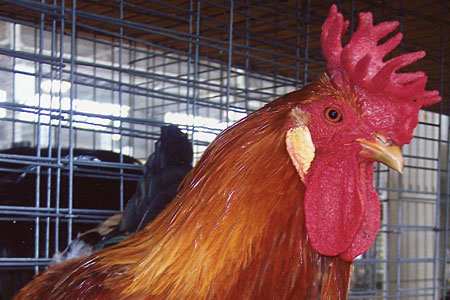
The Buttercup is an ancient breed from Sicily, an Italian island long noted for its farmyard chickens with a cup-shape comb and greenish legs. Sicilian Buttercup chickens in the United States all trace back to hatching eggs imported in 1892. The breed was admitted to the American Standard of Perfection in 1918.
Physical Attributes
The Buttercup designation comes from both the hen’s golden plumage color and the shape of the comb. The latter consists of a cup with evenly spaced medium-size points around the rim, and none at the center. The comb somewhat resembles a teacup with serrated edges, or a flower with a single circle of petals.
Although the original Sicilian chickens were not selected for any specific plumage color, the breed we know today comes in only one color variety. The rooster is red with a black tail. The hen is golden buff with black spangles.
Roosters and hens both have white earlobes and willow-green legs. The hens sometimes grow spurs.
Breed Qualities
Buttercups are not particularly winter hardy, and their large combs are vulnerable to frostbite. They much more enjoy a warm climate.
These active chickens can be flighty if they are not socialized as chicks. Further, they do not like close confinement. But they are superior for free ranging.
Buttercup hens lay small to medium size eggs with white shells, averaging 140 to 180 eggs per year. They rarely brood.
In size, Sicilian Buttercup chickens are rather small. Hens weigh around 5 pounds at maturity. Roosters weigh around 6½ pounds. Being neither especially meaty nor terrific layers, Buttercups are primarily popular for exhibition and as uniquely attractive backyard pets.
Helpful Links
When To Expect Your Hens to Start Laying
Sicilian Buttercup Chickens Offered by Cackle Hatchery®
And that’s today’s news from the Cackle Coop.
Gail Damerow has written numerous poultry-keeping books, available in the Cackle Bookstore.

